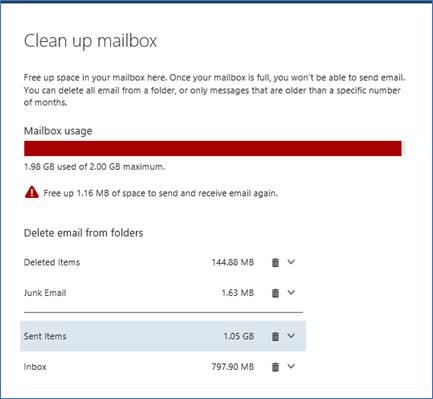This website uses cookies so that we can provide you with the best user experience possible. Cookie information is stored in your browser and performs functions such as recognising you when you return to our website and helping our team to understand which sections of the website you find most interesting and useful.
- Audit and Assurance
- Business Succession Plan
- Business Transformation
- Cloud Services
- Consulting Services
- CRM and ERP Products
- CRM Services
- Cybersecurity
- Data and AI
- ERP Services
- Forensic and Valuation
- Governance, Risk and Compliance
- HEADSTART Implementations
- Human Capital Management and Payroll
- Insurance Services
- Internal Audit
- Contact
- Services
- Audit & Assurance
- Business Succession Plan
- Business Transformation
- Cloud Services
- Consulting Services
- CRM and ERP Products
- CRM Services
- Cybersecurity
- Data and AI
- ERP Services
- Forensic & Valuation
- Governance, Risk and Compliance
- HEADSTART Implementations
- Human Capital Management & Payroll
- Insurance Services
- Internal Audit
- Investment Banking
- Lender Services
- IT and Managed Services
- Marketing and Communications
- Modern Workplace
- Outsourced Accounting
- Regulatory, Quality & Compliance
- Site Selection & Incentives
- Spend Management
- Tax
- Transaction Advisory
- Wealth Management
- Workforce Risk Management
- Industries
- Construction & Real Estate
- Discrete Manufacturing
- Federal Government
- Financial Services
- Government Contractors
- Industrial Equipment Manufacturing
- Life Sciences
- Manufacturing and Distribution
- Not-for-profit
- Process Manufacturing
- Professional Services
- Rolled Products
- State & Local Government
- Title IV Audit & Consulting
- Distribution & Supply Chain
- Insurance
- Insights
- About
- Locations
- Careers
- Pay
SMTP Submission Changes

We have successfully used an SMTP relay service for integrating on-premises applications and appliances to route mail through our Office 365 tenants. For years this has worked seamlessly, almost in a set-and-forget type of a configuration. Over the past several weeks, I have assisted a handful of clients in troubleshooting why their SMTP relays stopped working (after working reliably for years). In all instances, the issue was traced to the relay mailbox being full! After purging content from the mailbox, the relay would resume working again.
Mailboxes look like this:

Our SMTP relay accounts only use a kiosk license with 2GB of storage and while that isn’t much storage, we never had a need for a higher license. So what changed? On June 1st, Microsoft made a service change to the SMTP submission access. The two changes made were:
- items submitted by this protocol will be saved into the sent items, and
- the number of concurrent connections will be capped to 3.
For the most part, the behavior change to save all items routed through the relay into the sent items of the account is what consumed all the same. From the screenshot above, you can see that 50% of the storage is within the Sent Items folder.
Remediation options:
- Setup a retention policy to remove items older than X days (the mailbox above has a 7 day policy).
- Stop using a kiosk license and switch to the Exchange Online Plan 1 license. The license change would give you and additional 48GB and is only $2 more. It would still be a good idea to setup a retention policy but could be for a longer retention (30 day).
While I can appreciate the change as it can make some troubleshooting efforts much easier, the change has certainly caused some confusion on the first few occurrences.
Do you have IT issues causing confusion at your organization? Contact us. Our IT experts are ready to help.
This publication contains general information only and Sikich is not, by means of this publication, rendering accounting, business, financial, investment, legal, tax, or any other professional advice or services. This publication is not a substitute for such professional advice or services, nor should you use it as a basis for any decision, action or omission that may affect you or your business. Before making any decision, taking any action or omitting an action that may affect you or your business, you should consult a qualified professional advisor. In addition, this publication may contain certain content generated by an artificial intelligence (AI) language model. You acknowledge that Sikich shall not be responsible for any loss sustained by you or any person who relies on this publication.
About the Author
Dominic Irrcher
Sign up for Insights
Join 14,000+ Business executives and decision makers.
Latest Insights
Oracle Cloud
Redefining Internal Audit: How Oracle RMC Elevates Efficienc...
December 20, 2024
Technology
3 Methods for Faster and More Accurate Bank Reconciliation i...
December 19, 2024
Technology
From Paper to Automation: Rethinking Shop Floor Reporting
December 18, 2024
Article
Enhancing Disaster Recovery with Microsoft Azure Site Recove...
December 17, 2024
Dynamics 365
The Cost of Free Custom Code in Multi-Company Organizations
December 16, 2024
Oracle Cloud
Transforming the Role of Risk Managers with Oracle RMC: From...
December 13, 2024
Technology
Only One Microsoft Dynamics 365 ERP System Is the Right Solu...
December 12, 2024
Manufacturing>Equipment manufacturing
The Impact of AI in Equipment Manufacturing
December 11, 2024
Security
Intune’s Endpoint Privilege Management
December 10, 2024
Technology
Setting Up Delegate Approval Functionality in NetSuite
December 9, 2024




